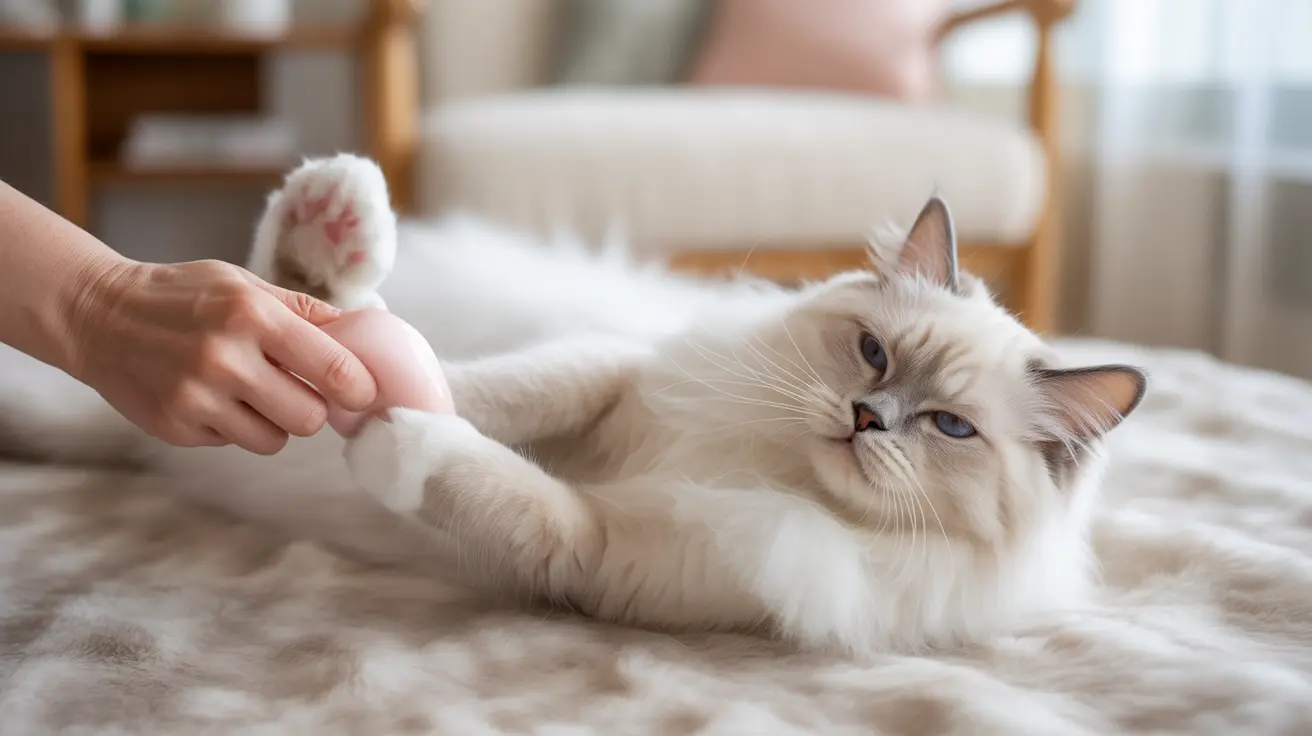Introduction
Maintaining healthy, well-moisturized cat paws is crucial for your feline friend's comfort and mobility. Many cat owners don't realize that their pets' sensitive paw pads can become dry, cracked, and uncomfortable, especially during extreme weather conditions or in homes with dry air. Understanding how to moisturize cat paws properly can prevent pain, infection, and mobility issues while ensuring your cat stays happy and active.
In this comprehensive guide, we'll explore veterinarian-approved methods for moisturizing cat paws, safe product recommendations, and essential care techniques that will help maintain your cat's paw pad health.
Understanding Cat Paw Health
Cat paw pads are specialized skin structures containing numerous nerve endings that help cats navigate their environment, maintain balance, and regulate body temperature. These sensitive areas require proper moisture levels to remain flexible and functional. When paw pads become too dry, they can crack, leading to pain and potential infections.
Common Causes of Dry Cat Paws
Several factors can contribute to dry cat paws:
- Indoor heating and air conditioning systems
- Walking on hot pavement or cold, salted surfaces
- Exposure to household cleaning chemicals
- Low humidity environments
- Excessive licking or grooming
- Underlying health conditions
Safe Moisturizing Options for Cat Paws
Veterinarian-Approved Products
When choosing a moisturizer for your cat's paws, select products specifically formulated for felines:
- Petroleum jelly (used sparingly)
- Commercial cat paw balms
- Natural moisturizers like olive oil
- Specialized veterinary healing salves
Natural Solutions
Some natural options can effectively moisturize cat paws when used properly:
- Unscented shea butter
- Food-grade coconut oil
- Pure lanolin
- Vitamin E oil
Proper Application Techniques
Follow these steps for safe and effective paw moisturizing:
- Clean the paw pads gently with a warm, damp cloth
- Pat dry thoroughly
- Apply a small amount of your chosen moisturizer
- Massage the product into the paw pads
- Distract your cat briefly to allow absorption
Preventive Care Tips
Implement these strategies to maintain healthy paw pads:
- Regular paw inspections
- Consistent moisturizing routine
- Use of humidifiers in dry environments
- Protection from extreme temperatures
- Regular veterinary check-ups
When to Seek Veterinary Care
Contact your veterinarian if you notice:
- Persistent cracking or bleeding
- Signs of infection
- Unusual swelling or discoloration
- Changes in walking behavior
- Excessive licking of paw pads
Frequently Asked Questions
How do I safely moisturize my cat's dry or cracked paw pads at home?
Apply a small amount of cat-safe moisturizer like petroleum jelly or specialized paw balm to clean, dry paw pads. Gently massage the product in and ensure your cat doesn't immediately lick it off.
What are the best cat-safe ingredients for paw moisturizers and balms?
The safest ingredients include petroleum jelly, pure lanolin, shea butter, and vitamin E. Avoid products containing essential oils or artificial fragrances, which can be harmful to cats.
How often should I apply moisturizer to my cat's paws, and how do I do it properly?
Apply moisturizer 2-3 times per week for maintenance, or daily for very dry paws. Clean the paws first, apply a thin layer of product, and massage it in gently.
Can environmental factors like cold weather or indoor heating cause my cat's paws to dry out?
Yes, both cold weather and indoor heating can significantly dry out cat paw pads. Using a humidifier and regular moisturizing can help counter these effects.
When should I take my cat to the vet for persistent dry or cracked paws?
Seek veterinary care if you notice bleeding, infection, severe cracking, or if the condition doesn't improve after a week of home treatment.
Conclusion
Maintaining well-moisturized cat paws is an essential aspect of feline care that contributes significantly to your pet's overall health and comfort. By following these guidelines and using appropriate products, you can help prevent painful conditions and ensure your cat's paw pads remain healthy and supple. Remember to always consult with your veterinarian if you have concerns about your cat's paw health or before trying new products.






